Martin Fone's Blog, page 119
June 22, 2022
Death At The Bar
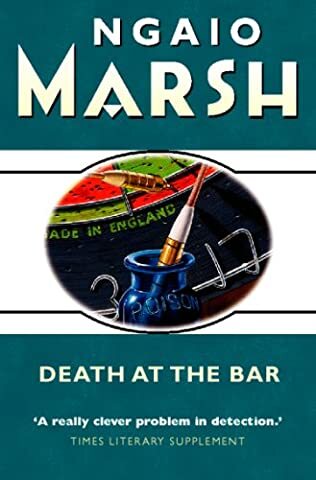
A review of Death at the Bar by Ngaio Marsh
It has taken me a while to warm to Ngaio Marsh, but the books written in the late 1930s and early 40s see her in fine form. Written in 1939 but published in 1940 the setting for Death at the Bar allows her to indulge her penchant for unusual settings and unusual murder methods as well as, in this case, to craft an excellent pun. The murder occurs in a bar, the Plume of Feathers in the south Devon village of Ottercombe, while the victim, Luke Watchman, a King’s Counsel, is also a member of the other bar.
Ottercombe is Watchman’s regular holiday retreat, and he is there with his two friends, Sebastian Parrish, an accomplished movie star, and Norman Cubitt, an up-and-coming painter. Watchman, though, has an unerring knack of rubbing people up the wrong way and takes a particular dislike to a relative newcomer to the village, Bob Legge, who amongst other things is a leading light in the local Leftist movement and an accomplished darts player. Their two cars lock horns as Watchman makes his entrance to the village and the barrister is keen to cast aspersions on his and some of the others’ political beliefs. There is a feeling that the two have had some previous encounter.
Watchman also earns the dislike of the publican’s son, Bob Pomeroy, and the girl he believes to be his girlfriend, Decima Moore. Legge’s party trick is to get someone to put their outstretched hand on the dartboard and to throw a dart between each span. Watchman challenges Legge to repeat his trick, one of the darts hits Watchman’s finger, he collapses and after a tot of brandy mutters “Poisoned” and dies. As Legge had no obvious access to poison, let alone an opportunity to dip a dart into it – they were brand new, unwrapped for the occasion – the verdict of the subsequent inquest is one of accidental death.
Goaded by local, Nark, who alleges that if you use the Plume of Feathers, you run the risk of being poisoned, publican Abel Pomeroy visits Scotland Yard with allegations that Watchman was murdered. Roderick Alleyn, Marsh’s go-to detective, accompanied by his faithful colleague, Fox, lead the investigations.
There are the usual red herrings, some well-constructed misdirections, and several suspects who, at various points of the story, could have killed Watchman for a variety of reasons. Marsh has taken care over her plot and the pieces only start coming together when some background information emerges about the amateur water colourist, Hon. Violet Darragh, who hitherto had been a rather ancillary figure. There are clues dotted throughout the narrative for the alert reader to garner and mull over and while the identity of the culprit ultimately comes as no surprise, the motivation for the murder and the method shows some ingenuity that may have eluded many of Marsh’s readers.
Missing from the tale is Alleyn’s usual Dr Watson, the journalist Nigel Bathgate, his role assumed by the local Chief Constable, the rather eccentric Maxwell Brammington, to whom Alleyn reveals his deductive processes. Annoying as Bathgate can sometimes be, I rather missed him. Agatha Troy is also absent from the narrative, although it is revealed en passant that Alleyn has married her. The little wife knows her place, perhaps.
Marsh uses the characters in her book to engage in a discussion about left wing politics and the rights and wrongs of capital punishment, which are interesting documents of their time. There are moments of comedy, usually provided by the more rustic characters and Marsh enjoys herself in portraying the Devonian accent and exploring the tensions between the locals and the holidaymakers.
It is an engaging book, an entertaining read, and keeps the reader on their toes.
June 21, 2022
Post After Post-Mortem
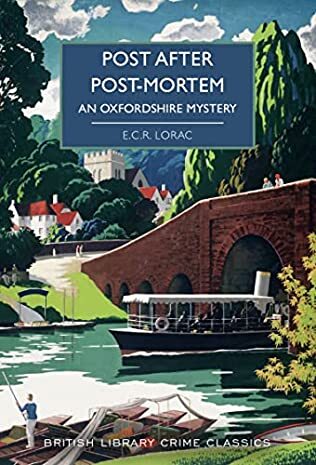
A review of Post after Post-Mortem by E C R Lorac
One of the literary world’s most intriguing questions is why some writers are remembered long after they had finished writing while others, equally worthy, fall into unwarranted obscurity. Edith Caroline Rivett, who wrote under the nom de plume of ECR Lorac, falls into the latter category, wholly unjustifiably, and it is one of the pleasures of the renaissance of Golden Age detective fiction that her books are slowly but surely being plucked out of obscurity, each occasion one to be rejoiced over. This, the eleventh in her Inspector Macdonald series and originally published in 1936, has recently been reissued as part of the excellent British Library Crime Classics series.
We are still having problems with our post, during one six-week period we had just three deliveries, a combination of Covid-related sicknesses and reorganisation, we were told. Thankfully, there was nothing of any importance that we had not been advised by other means, but there could have been a missive whose arrival could have changed the complexion of affairs dramatically. Richard Surray’s post has been delayed, not because of staff shortages and managerial incompetence, but because he has moved around a lot. Had he received the letter posted by his sister, Ruth, on the night that she supposedly committed suicide, the verdict of the inquest would have been altogether different.
As it was, Ruth was found dead in her bed, seemingly having taken an overdose. The inquest recorded a verdict of suicide, Ruth was known to be depressive and Richard, a psychologist, knew she was under stress. Richard, keen to avoid causing the Surrays, his highly successful family, any unnecessary distress, wraps up matters with the minimum of fuss. However, the receipt of Ruth’s letter, written seemingly in good spirits, changes his views of her death and he calls Inspector Macdonald to investigate.
Lorac takes more care than usual in portraying Macdonald. He is empathetic, keen to minimise the distress for the family, and yet keen to ensure that justice is done. Unusually, he takes a virulent personal dislike to one of the suspects but battles to ensure that personal animosity does not cloud his judgment. It is a complex problem that he has to solve. There are a large number of potential suspects, some of whom are more plausible than others. As well as Ruth’s murder, there is an “accident” to one of the guests, two of the suspects are poisoned, and the Surray’s home suffers an arson attack.
Their enquiries take the investigating officers, Macdonald to London and Reeves to Mallaig. Reeves has an upsetting period locked in a cupboard and his expertise in ju-jitsu comes in handy. The culprit is unmasked by a rather underhand trick, but the explanation of why and how they were driven to commit the murder and conduct a reign of terror to cover their traces, including an intriguing way to commit arson, is ultimately satisfying.
At its heart, the book is about the psychology of obsession and devotion and how it can lead people to extreme actions. It also demonstrates that once a certain course of action is taken, it leads to further complications. Lorac also dwells on the role of women in society, particularly in the world of academia, publishing, and academia.
While the Surray girls are successful in their own rights, there is an expectation and a certain pressure for them to settle down and get married. Curiously, though, for a story with such a strong theme, the women are remarkably absent from the stage. Ruth is murdered early on, Naomi goes off to Scotland and, despite being a potentially valuable witness or even suspect, is never called for questioning by Macdonald, and Mrs Surray flits around in the background, muttering about the disruption to her household. Perhaps their relative silence makes Lorac’s case about the difficulties facing women seeking to make their way in life more powerful.
I found the book a tad overlong, but it is well-written, intriguingly plotted, and, while Lorac is not entirely open with all the evidence, keeping the reader guessing until the end, it all makes sense in the end. It is a mystery why Lorac is so underrated. Perhaps Inspector Macdonald will tell us why.
June 20, 2022
The Ploughman And His Lunch

If there is a dish designed to evoke images of a bucolic England lost forever, it is the ploughman’s lunch, a simple repast of bread and cheese, designed to fill the stomachs of agricultural workers as they toiled on the land. In true Masterchef style, pubs nowadays cannot resist the opportunity to “elevate” the dish.
It is easy to see why bread, cheese, and ale made up the traditional meal of agricultural workers. They were common foodstuffs, easily carried to the fields, did not require cooking, and were filling. There are references galore in literature to agricultural workers eating bread and cheese during or after labouring in the fields.
For public houses, especially in market towns, providing a meal of bread and cheese made commercial sense. It required little preparation, was what agricultural folk were used to, and cheese being especially dry and salty made the customers thirstier and drink more beer. Even well into the 20th century, it was often the only meal available. Martin Armstrong observed in The Weekend Review (1932) that “on these occasions in country inns when bread, cheese and beer seem so extraordinarily good, the alternative is generally nothing; and compared with nothing bread, cheese and beer are beyond compare”.
Curiously, the meal was known prosaically as bread and cheese rather than a ploughman’s lunch. It took a sustained advertising campaign to associate the term with bread and cheese.
Rationed between 1942 and 1954, cheese’s natural relationship with beer had been severely damaged and sales of the dairy product were in the doldrums. Once rationing was over, the Cheese Bureau was set up “for the admirable purpose of popularising cheese and, as a corollary, the public house lunch of bread, beer, cheese, and pickles”, reported the Brewers’ Society’s A Monthly Bulletin in its July 1956 edition. “This traditional combination”, it went on, “was broken by rationing; the Cheese Bureau hopes, by demonstrating the natural affinity of the two parties, to effect a remarriage”.
The same edition gave an account of a tasting held at the splendidly named Samson and Hercules in Norwich, a dancehall rather than a pub, at which the writer and broadcaster, Adrian Bell, “made a spirited plea for the “auld alliance” of beer and cheese”. He went on to tell of a pub near where he lived where “all you need say is, “Ploughboy’s Lunch, Harry, please”. And in a matter of minutes a tray is handed across the counter to you on which is a good square hunk of bread, a lump of butter and a wedge of cheese, and pickled onions, along with your pint of beer. Ploughboy’s Lunch, that’s called – remember those words: they stand for something pretty good”.
Thefollowing year, in its June 1957 edition, A Monthly Bulletin reported on a much grander tasting, organised by the Cheese Bureau and the Brewers’ Society, held at Fishmonger’s Hall in London with five hundred guests in attendance, After sampling sixteen cheeses and beer brewed by eight London brewers – those were the days – “there followed a “Ploughman’s Lunch” of cottage bread, cheese, lettuce, hard-boiled eggs, cold sausages, and, of course, beer”. Bell’s ploughboy had clearly grown up in the intervening eleven months.
The report went on in optimistic vein to assert that “this is just the sort of light midday meal that one might expect to find in an ordinary public house, where the customers do not wish to spend much time or much money on their lunch, and where the landlord cannot afford a catering staff. Licensed victuallers please note”.
Publicans did begin to take note, but it took a concerted publicity campaign over the next few years to re-establish the connection between cheese and beer and to associate the name of a ploughman’s lunch with the meal. Events were held around the country to promote the delights of English cheese and its pairing with beer. Newspaper reports of the events, such as those held in Preston in March 1960 and in Kensington in September 1961, still felt it necessary to explain what was meant by Ploughman’s Lunch. Even pubs had to educate the public. In 1962 a board outside the White Hart in the Sussex village of Catsfield, stated that “although lunch is not served, Salads and Ploughman’s lunch – beer and cheese – are always available”.
By the 1970s the ploughman’s lunch was firmly established on the pub menu and was at the height of its popularity. It seemed to fit in with the zeitgeist, appealing to a yearning for a lost and distant past, while pushed for all it was worth by publicans who appreciated the higher profit margins it offered over meals that had to be carefully prepared and cooked. The 21st century version of the meal is a much more elaborate affair, but it is salutary to note that the name, ploughman’s lunch, was cooked up by marketeers rather than handed down the centuries.
June 19, 2022
Worm Of The Week

Microbial Genomics as a journal can be a tad indigestible but they have got their teeth into a good story with a report on research into the eating habits of the larvae of Zophobas morio, a species of beetle known as superworms. They have enzymes in their guts, the team from University of Queensland found, capable of digesting polystyrene.
The larvae were introduced to pieces of polystyrene commonly used in building insulation which they mechanically stripped and their gut enzymes did the rest. Although they put on less weight than those fed on a more traditional diet of bran and their faeces turned from brown to a white colour within forty-eight hours, they were able to complete their life cycle.
This discovery has prompted the thought that the superworms could be an innovative solution to disposing of the growing mountain of polystyrene waste.
It is worth a try, methinks.
June 18, 2022
Croissant Of The Week

Selling like hot cakes at Café Zavertailo is a new croissant which is described as a croissant pastry crust, with custard vans, baked apples, Italian meringue, and crowned with a scoop of vanilla ice. Costing 97 hyrvnias (€3) forty-two are made at a time and such has been the demand that the café makes three batches a day.
Said to be inspired by the British Prime Minister and his trademark hairstyle, the bakers have made one serious error. Their croissant delivers what it promises, no word of a lie.
They have also denied that they have plans to make a tart in honour of the British Culture Secretary. We will see.
June 17, 2022
Thirty-One Of The Gang

Pepper’s ghost is an illusion technique, named after John Henry Pepper. A brightly lit figure out of the audience’s sight below the stage is reflected in a pane of angled glass placed between the performer and the audience. To the audience, it appeared that there was a ghost on stage. Pepper perfected the technique, such that the illusion could be carried off in virtually any theatre or music hall. When he first demonstrated it in a scene from Charles Dicken’s The Haunted Man in December 1862, it was received rapturously by audience and critics alike.
The piece of glass, in showmen’s argot, was known as a phant, derived from the first syllable of phantom. They were anxious to avoid giving any reference to glass, in case they gave the game away.
Pig months were the eight months with an “r” in their name, in which it was said to be safer than the summer months to eat fresh pork.
A pigott was a lie, brazen and unvarnished, derived from the Irish journalist Richard Pigott, who forged evidence that Charles Stewart Parnell of the Irish Land League had been involved in the murders of senior representatives of the British government. Parnell sued successfully for libel and Pigott committed suicide, shooting himself in 1889. A forerunner of the johnson, I suppose.
June 16, 2022
Bayab African Grown Gin

One of the most distinctive sights of the sub-Saharan savannas is a tree whose branches look like branches, the baobab, known as the “upside-down tree”. According to African legend, it one of the first trees to appear on earth. However, when it saw the slim and graceful palm tree the baobab cried out that it wanted to be taller. Then when it saw the beautiful flame tree with its distinctive and vivid red flowers, the baobab started to lobby for flower blossoms. Then when it saw the fig tree, it wanted fruit. The gods, naturally irked by the tree’s demands, uprooted it and then replanted it upside down to keep it quiet. As well as explaining the shape of the tree the moral of the tale is that you should be satisfied with what you have got.
More pertinent to the ginaissance is its fruit, which takes some trees two hundred years to start producing, has a bold, sweet, citrussy taste, like a tangy sherbet. Whitley Neill uses it but black-owned South African spirits brand, Spearhead, have chosen to put this bold, brassy fruit at the heart of their gin that encapsulates the essence of the African continent.
Using locally grown sugarcane and botanicals sourced from the continent, such as juniper berries, coriander, rosemary, cinnamon, coarse salt, lemon peel, orange peel, and baobab, the mix is blended with the purest water from the Midlands of KwaZulu-Natal and distilled in small batches in a copper still at the Midlands Distillery in KwaZulu-Natal. Crystal-clear, the resulting spirit with a mouth-watering ABV of 43% is a complex melange of zesty and sweet citric notes, gentle spices, mellifluous herbs, and peppery juniper, firmly in the London Dry style, but with a distinctive African twist.
The African vibes are continued in the design of the bottle. It is perfectly round, dumpy, with broad shoulders, and a medium sized neck leading to what appears to be a natural cork stopper. The labelling features a vivid and eye-catching, oversized patterning in a blue against a white background. A bright orange is used to good effect to highlight the essentials of the product. The label at the rear tells me that “the best tasting gin hails only from the best ingredients and natural environment that nature has to offer”.
It is a brave claim but rather like the gin there is substance to the boast. If you like your gins bold and vibrant, then Bayab is one you should definitely look out for.
Until the next time, cheers!
June 15, 2022
Mystery Of Mr Jessop
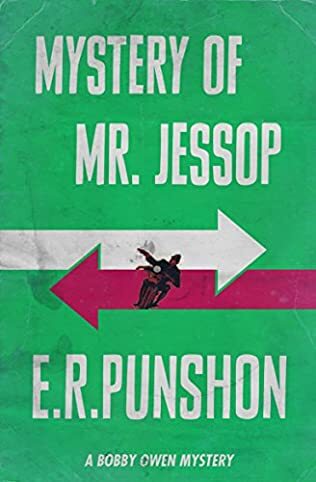
A review of Mystery of Mr Jessop by E R Punshon
In this the eighth in Punshon’s Bobby Owen, originally published in 1937 and now reissued by Dean Street Press, the aspiring young Detective Sergeant is part of a police raid on a well-known fence, TT Mullins, who, according to information received, is in possession of a valuable necklace stolen from a London jeweller. The raid ends in fiasco as Mullins and his associate, Wynne, catch the police trying to catch them. In the confusion shots are heard and inside Mullins’ house a dying man, Mr Jessop, is found. To add further intrigue, Jessop is the jeweller from whom the necklace, valued at £100,000, over £7m in today’s terms, was stolen and Jessop professes not to have known him.
The plot for this story is complicated, but boils down to two points, who killed Jessop and where is the necklace? There are plenty of twists and turns, a shoal of red herrings, and a charabanc full of suspects with plausible motives. Each of the suspects is up to no good, even the victim. What could have been an impenetrable mystery which threatens to lose the reader is handled with aplomb by Punshon who by this time has found his writing style. The narrative is sprinkled with clues, seemingly disparate articles such as a newspaper carrying the picture of a duchess found on the body of the victim, the tip of a rubber glove, some missing football results, an obsessive interest in furniture removal vans, a shady drinking establishment which everyone seems to belong to, but no one uses and much more. Patiently, Bobby Owen pieces the clues together to solve the mysteries, and the reader can too with patience and some reflection.
Owen’s mentor, Mitchell, has disappeared by now, replaced by Ullyet. Bobby is still a junior and is delegated what seem to be the more mundane or less promising leads to follow. However, he has the happy knack of being in the right place at the right time and is willing to think outside of the box rather than just follow orders. As the story unfolds, Ullyet appreciates Owen’s assistance more and when he is incapacitated by a gun shot is happy to let Owen have his head to bring the case to its conclusion.
One of the sub-themes that crop up in books of this genre at the time is whether certain classes and professions are above suspicion. Can a bishop or even a lowly parish priest or a member of the aristocracy, such as the Duke and Duchess in this story, be capable of dabbling in the murky underworld? As well as a critique on class consciousness, Punshon gives us some insight into the political atmosphere of the time. There are meetings of Fascists and Communists and one character, Higson, sees no difference between the two, each as interested in beating up their opponents as being the catalyst for political change.
It would not be a Punshon without a set piece and the car chase across the Cotswolds in pursuit of a removal van in which the necklace is secreted is the highlight for me. At one point there are almost half a dozen vehicles involved, and the narrative is full of stops to ask for directions, accidents, vehicles overturning, a Duke in an embarrassing situation, and gun fights, before Owen with the assistance of two of the previous suspects can make an arrest and retrieve the jewels. In an age accustomed to instant communications, CCTV, air assistance, and sat nav, it was salutary to realise just what a logistical nightmare it was for the police to pursue suspects in a car chase. Occasional stops at a phone box to obtain the latest intel and reliance on intuition was all they had. It was as well that all the pursuers had the same goal in mind.
This is a classic example of a fairly clued murder mystery and even if at times the plot was overly complicated, it was an enthralling and entertaining read, made by the finale. It was also good to see Maggoty Meg make a welcome appearance.
June 14, 2022
The Trail Of The Three Lean Men
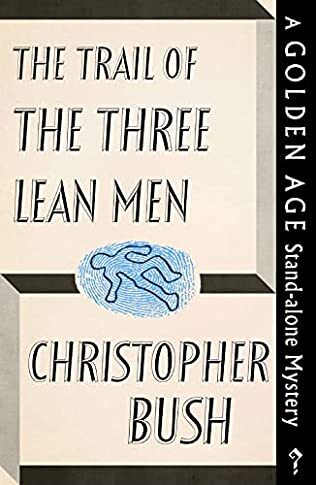
A review of The Trail of the Three Lean Men by Christopher Bush
By the time The Trail of The Three Lean Men was published in 1932, Christopher Bush had given up his full-time employment as a teacher to concentrate on his developing writing career. This book is one of the rarest of his books, not helped by the fact that he chose to publish under the nom de plume of Noel Barclay, and it has been rescued from obscurity by Dean Street Press, for which they are to be congratulated. It may be that Bush did not want to distract from his now established brand of Ludovic Travers’ murder mysteries.
This is altogether a different book, more of an adventure story or a thriller in the John Buchan mould, albeit without the jingoism, or à la Eric Ambler without the finesse and psychological tautness. It is an engaging enough tale and there is more than enough to keep the reader entertained but it does not hit the heights of the masters of the genre.
Part of the problem, I think, is that it is narrated in the first person. Our guide is Don Temple, a man down on his luck who is lured, partly against his will and his better judgment, into a foreign caper with a gang in the imaginary European country of Levasque. In a thriller the reader can expect that the protagonists will experience moments of danger when their lives are in peril. Having your lead character recount the tale after the event takes away a lot of the dramatic tension as the reader can only assume that their narrator has survived their ordeal.
Short of funds Temple visits a newspaper friend of his in an attempt to secure a position. Their conversation turns to the legendary journalist, Tom Varlow, who has disappeared but who could make a story out of any seemingly random event. Looking out of the window, they see three lean men of various heights walking down the street and Temple accepts the challenge to follow them and write a story about them. Some dropped travel documents tell him that the motley crew of Prargent, Spider, Marcel together with their boss, Gimbolt whose real is revealed as Larkin, and a mysterious Mr Lewis are going to Levasque and he duly follows them.
The gang become suspicious of his attentions, not unsurprisingly, for which he earns a blow on the head and given an ultimatum to join them. Despite not knowing precisely what their game is, Temple agrees and masquerades as Prargent’s valet. The gang’s mission is to assassinate the dastardly Destordi who assassinated Larkin’s father in the States and has fled to Levasque where there is no extradition treaty.
During his time in Levasque, Temple witnesses a murder and an assassination attempt, for which he is arrested, frequents the Café Granard where he meets the enigmatic Feuermann, who is employed by Destordi, and an English chanteuse, Lucy, with whom, inevitably, he falls in love. Destordi is holed up in a well-protected house and after the gang’s original plan, suggested by Temple, of campaigning for a change in extradition laws fails spectacularly, they have to resort to more direct methods.
They employ an ingenious method to break into the house, and there is a shootout, increasing the body count by another four, Lucy, who had been held hostage, is rescued, and the true identity of Feuermann is revealed. There is an element of “and they all lived happily after” to the ending as Temple makes his fortune, and gets his girl, by which time the journalistic side of the tale has long been forgotten.
The book had its moments and was written with some verve, but Bush has written far better, and I got the sense that this was something he wanted to get out of his system. One for the completist.
June 13, 2022
The Man Who Invented The Pneumatic Tyre

As well as that all-important spark of ingenuity a successful inventor needs a healthy slice of good fortune and perfect timing. The footnotes of history are littered with inventors who were ahead of their time and failed to attain the renown they richly deserved. A case in point is Robert William Thomson (1822 – 1873), a son of Stonehaven and a serial inventor.
He cut his inventor’s teeth by improving the design of his mother’s mangle before going on to invent and patent a self-filling fountain pen (1851), a steam traction engine (1867), a device for detonating explosive charges electronically, and a sprung mattress. Even the grim reaper could not stop him. After his death in 1873, Clara, his wife, secured for him his fourteenth patent, for an elastic belt.
Arguably Thomson’s greatest contribution to man’s advancement, although few of us realise it, came as a twenty-three-year-old when he developed what he described in his patent application as “a new and useful Improvement in Carriage Wheels”. He claimed that his new design would lessen “the power required to draw the carriages, rendering their motion easier, and diminishing the noise they make when in motion”.
Thomson proposed using “a hollow belt composed of some air and water tight material such as sulphurised caoutchouc or gutta-percha [types of rubber], and inflating it with air, whereby the wheels will in every part of their revolution present a cushion of air to the ground or rail or track on which they run”. This stretchy belt of rubberised canvas was to be enclosed within a strong outer case of leather and bolted to the wheel.
“For common passenger vehicles”, he claimed, “the elastic belt will require to be about four of five inches in diameter and to be inflated to such an extent as to keep the tyre of the wheel two and a half or three inches from the ground – a distance which, it is presumed, will be found sufficient to admit of the wheel passing over any stones or other matters projecting beyond the general of any ordinary turnpike road without the solid tyre coming in contact with them”. Thomson even claimed that so effective were his “Aerial Wheels” in providing a smooth ride that springs could be dispensed with.
Thomson secured a UK patent (no 10990) for his pneumatic tyres in 1845 and was granted patent rights in France and, on May 8, 1847, 175 years ago, in the United States (No 5,104). Keen to demonstrate the merits of his tyres, in March 1847 he arranged for two carriages to set off side by side in Regent’s Park. To the astonishment of the sceptical onlookers, the one fitted with Thomson’s “Aerial Wheels” comfortably outpaced the other. Sets were fitted to several horse-drawn carriages and passengers commented favourably on the comfort of the ride and the reduction in noise. One set ran for 1,200 miles without any obvious sign of wear and tear.
Timing, though, is everything and adoption of Thomson’s tyres was hindered by the technological difficulties and expense involved in producing tubes that were thin and strong enough. Also, there was little demand. The emergence of cycling as a popular form of transport was decades away, only kick started by James Starley’s invention of the penny farthing in 1871. In frustration, Thomson turned his energies to other projects, including the production of solid rubber wheels.
One man whose timing was perfect was John Boyd Dunlop, another Scot, although living in Belfast. Watching his son, an enthusiastic cyclist, finding it hard going riding along the cobbled streets of Belfast on a metal-wheeled tricycle, Dunlop’s brainwave was to develop an inflatable rubber tube, which he wrapped in canvas and glued to the wheels. This pneumatic tyre improved the speed and comfort of the ride immeasurably and alive to the opportunities his invention presented to cyclists, in 1888 he applied for and was granted a patent. The Patent Office evidently had overlooked the prior claims of Thomson’s almost identical tyre.
Dunlop’s reprieve was only temporary. As he began to put his tyres into production and they became widely available, Thomson’s patent was unearthed, and Dunlop’s was withdrawn. This allowed the brothers Michelin, Edouard and André, to steal a march on him and supply the nascent motor car manufacturers with pneumatic tyres. Dunlop’s patent difficulties were only resolved after he had made further modifications to his design, putting him on the road to the fame and fortune that had eluded Thomson.
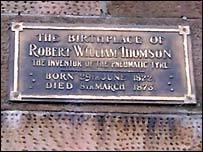
Although the names of Goodyear, Dunlop, and Michelin are familiar to motorists and cycling enthusiasts alike, it is thanks to Thomson that we can enjoy comfortable rides on inflated rubber tyres. His home town of Stonehaven, fittingly, remembers him, holding, each June – this year on the 26th after a two-year break – a rally of veteran and vintage vehicles to celebrate his genius, an annual fixture since 1968. On the wall of No 9, Market Square is a bronze plaque, presented by the Royal Automobile Club in 1922 to commemorate the centenary of his birth on June 29th. He is buried in Dean Cemetery in Edinburgh.
It would be appropriate in this the bicentennial year of his birth if Thomson found the recognition his ingenuity merited.
For more stories of inventors whom history has forgotten, read The Fickle Finger, available by following the link below:
https://www.troubador.co.uk/bookshop/computing-science-education/the-fickle-finger/



